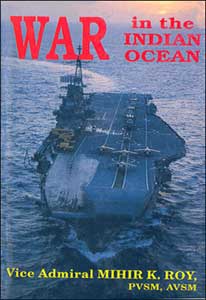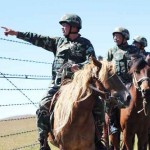Organizational structure of frogmen
The Mukti Bahini frogmen were grouped in four task forces located at Chittagong, Chalna/Khulna, Naryanganj and Daudkhandi/Chandpur. Each sector was in turn allotted four task units generally comprising personnel who hailed from that sector.
This unsung and untold saga of the Bangladesh frogmen is an incredible story and arouses both admiration and amazement for the amount of damage they inflicted on the enemy with such sparse tools in their inventory.
A task unit in turn comprised 10 task elements. And each task element had three frogmen armed with one neutrally buoyant limpet mine (later increased to two), one grenade as also a knife, swimming fins and a wrist compass. In addition, a task unit was allotted a loaded rifle. This unsung and untold saga of the Bangladesh frogmen is an incredible story and arouses both admiration and amazement for the amount of damage they inflicted on the enemy with such sparse tools in their inventory. The achievement of the Bangladesh frogmen is sinking or damaging over 100,000 tons of shipping remains unparalleled in the liberation history of littorals in the ‘Ocean of Destiny’.
In order to obtain maximum success, the first coordinated attack by 176 frogmen was on the dark night of 15/16 August 1971 against Chittagong, Chalna/Khulna and the river ports of Narayanganj, Chandpur and Barisal. Surprise was the key factor as security was taken for granted.
The attack on major seaports
The attack on the major port of Chittagong was led by a former submariner and a medical student who belonged to the port city and hence were familiar with the geography as also the details of the ships in harbour. Three groups sauntered into the port in pairs in broad daylight with the limpet mines and fins hidden in baskets of jackfruit which they carried on their heads nonchalantly and carried out a reconnaissance in daylight. Targets were then visually assigned to each pair. The group then walked upstream in the dark and waited for the designated H-hour which was just after midnight to coincide with the beginning of the ebb tide as also a change in shift in the dock labour.
On reaching their assigned targets, they held on to wooden spars under the jetty in order to synchronize attacks for creating maximum confusion and thereby escape to safety.
They rolled up their lungis like in a vaudeville show, and put on their swimming fins (discarded in later operations as it compromised the anonymity of the frogmen who were anyway excellent swimmers). Watches were synchronized and they entered the cold murky waters well upstream at precalculated intervals. With a bamboo reed in their mouth acting as a breathing snorkel, they floated downstream with the ebb current keeping as low as possible in the water. On reaching their assigned targets, they held on to wooden spars under the jetty in order to synchronize attacks for creating maximum confusion and thereby escape to safety.
 When H-hour approached, Choudhry and Alam took a deep breath and swam to the middle of the vessel and attached the limpet mines with magnets to the port side of the hull adjacent to the engine room and just below the water line. The explosion would then flood ~he engine room, thus disrupting the power supply which would render the pumps unserviceable. The other pair of Aminullah and Momen likewise attached the limpets to the starboard side of the freighter. Then both pairs swam downstream past the docks and escaped inland by the time the soluble plugs dissolved in about 30 to 40 minutes thus activating the limpet charges.All hell broke loose when explosives rent the air and the Pakistani freighters Al Abbas and Ohramzd settled on the bottom. Similar attacks were carried out on two coasters, one tug, one ferry boat and two harbour crafts. Searchlights were immediately switched on and trigger happy sentries stirred from their somnolence promptly emptied their carbines at every shadow and showered hand grenades on the flowing waters of Karnaphuli river. Ullah, Sheikh, Khusru and Mondal penetrated the security barriers at Chalna on the same night and attached four limpet mines to the 7000-ton Somalian freighter SS Lightning which grounded on the silt of Pussur river.
When H-hour approached, Choudhry and Alam took a deep breath and swam to the middle of the vessel and attached the limpet mines with magnets to the port side of the hull adjacent to the engine room and just below the water line. The explosion would then flood ~he engine room, thus disrupting the power supply which would render the pumps unserviceable. The other pair of Aminullah and Momen likewise attached the limpets to the starboard side of the freighter. Then both pairs swam downstream past the docks and escaped inland by the time the soluble plugs dissolved in about 30 to 40 minutes thus activating the limpet charges.All hell broke loose when explosives rent the air and the Pakistani freighters Al Abbas and Ohramzd settled on the bottom. Similar attacks were carried out on two coasters, one tug, one ferry boat and two harbour crafts. Searchlights were immediately switched on and trigger happy sentries stirred from their somnolence promptly emptied their carbines at every shadow and showered hand grenades on the flowing waters of Karnaphuli river. Ullah, Sheikh, Khusru and Mondal penetrated the security barriers at Chalna on the same night and attached four limpet mines to the 7000-ton Somalian freighter SS Lightning which grounded on the silt of Pussur river.
One collier and three coasters at Chandpur were also attacked by the task element led by an ex-naval frogman. In addition, three river steamers, six mechanized barges, two motor launches and four pantoons were destroyed at Khulna, Narayanganj and Daudkhandi. The leaders of this unit were the former naval sailor Rehman and a young student, Siddiqui.




